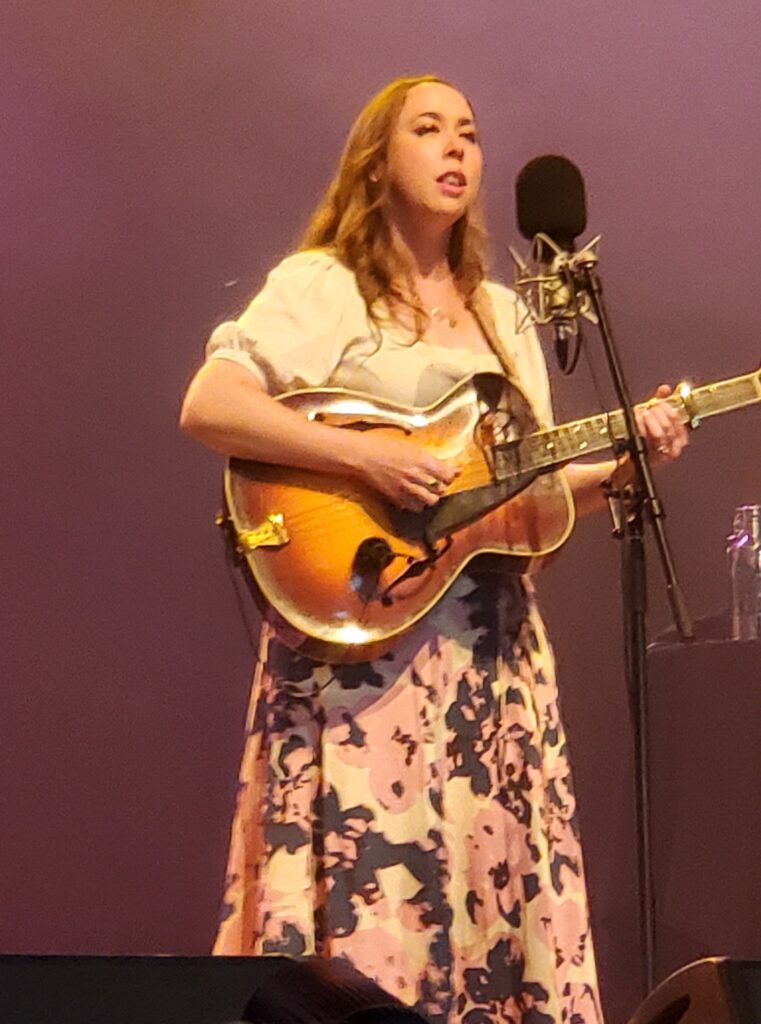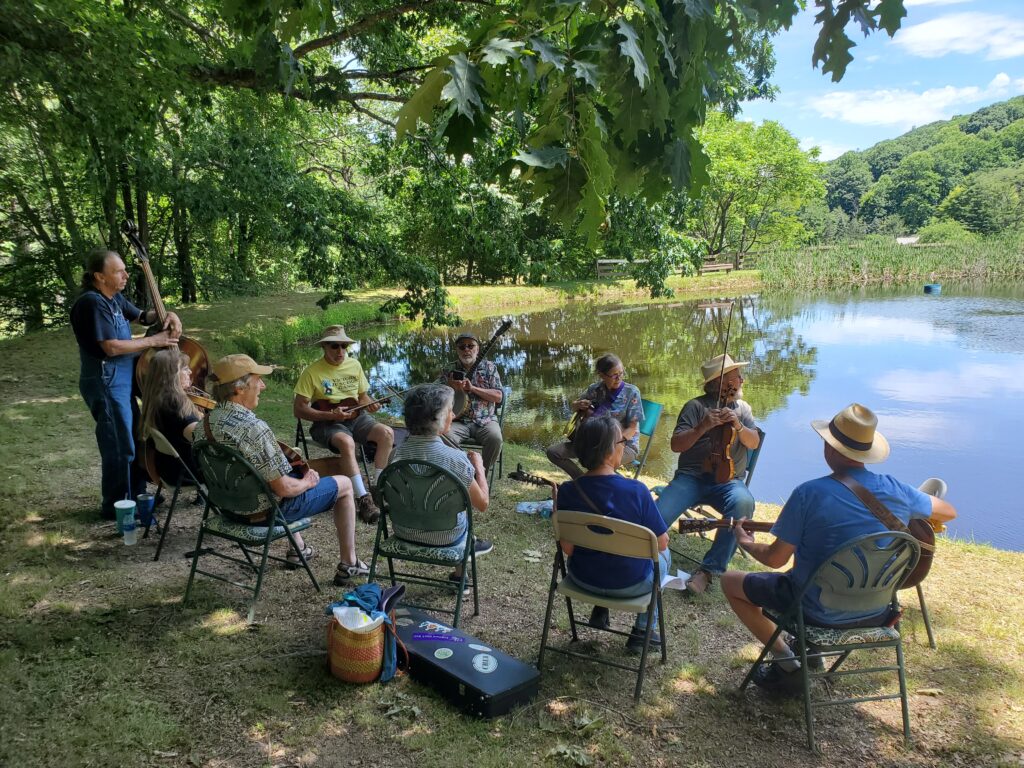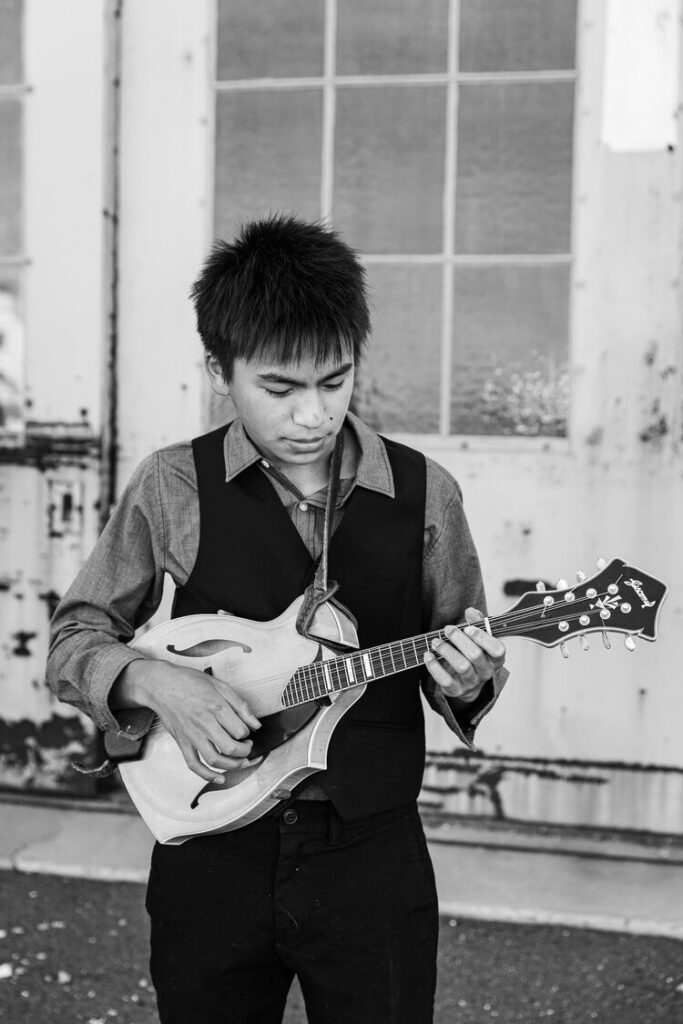Dear Elena,
Picking
People have been singing you to sleep since you were born. When I have the extraordinary opportunity to sing you to sleep, I sing some songs that the other lucky grown-ups don’t. Like, “If I had a Boat” by Lyle Lovett. You like that one a lot, and sing along.
But there’s one I’ve been singing for years, as much a wish as anything. It’s a Jimmy Buffett tune called, “There’s Something so Feminine About a Mandolin.”
You see, there’s this one couplet, where he’s talking about a theoretical daughter he might have…
Maybe one day she’ll take a fancy to picking,
Cause when that bug bites you, you live with the sting.
“Picking,” as you’ll know by now, is what bluegrass musicians call just sitting around and playing music. “You wanna pick?” “Let’s pick one.”
And darned if you haven’t become a picker. The instrument that you picked to pick on doesn’t use a pick, though.
Fiddle
The first musical instrument you started taking lessons on was drums. You actually did pretty well with that, and in fact, I wrote a blog about you playing drums.
But after a few months, you said you wanted to give up drums. What you really wanted to play, you said, was fiddle. We were all a bit skeptical, but you continued on the fiddle theme for quite a while. Then the universe smiled on us all. Because I was playing in a band called Critical Grass, and the fiddle player in that band is an extraordinary woman named Leah Wollenberg. Well, Leah teaches fiddle at Manning Music in Berkeley, and they thought that Leah would be the perfect teacher for you.
They were right.
You and Leah immediately bonded over Harry Potter (I think she might be a Hufflepuff) and became really good friends. She’s also doing an amazing job of teaching you fiddle. And it seems like you’ve truly taken a fancy to picking – you are eager to pull out your fiddle when there’s an opportunity to play.
In fact, when we were up at Strawberry this year, you brought your fiddle, because pickers bring their instruments to Strawberry. So your dad and I got to sit and pick a few with you.

You’ve already outgrown one rental fiddle and are on your second (third?) one.
You and Leah keep learning more new tunes. You started with Boil Them Cabbage Down, because that’s what all of Manning’s students start with. Then Old Joe Clark. Cluck Old Hen, and we all got to sing along:
My old hen’s, a real good hen – she lays eggs for the railroad men.
Sometimes one, sometimes two, sometimes enough for the whole damn crew.
Cluck old hen, cluck and squaw – ain’t laid an egg since late last fall.
Cluck old hen, cluck and sing – ain’t laid an egg since late last spring.
Leah taught you Elk River Blues, which I’d never heard, but is a beautiful tune. And now you’re starting on Soldier’s Joy.
Playing with the band
A few weeks ago, our band, Critical Grass, was going to be playing a gig at Gather in Berkeley. You’ve been to Gather plenty of times to see me and Uncle John play music, but you mostly ate french fries and crawled around the garden area on the patio.
But a couple of weeks before this gig, Leah asked you, “Do you want to come up and play a tune with us at Gather?”
Somewhat to our surprise, you said, “Sure.”
So on Saturday, September 7, 2024, you, your mom, Ana, and Great-Gran were all sitting at a table at Gather. You were probably eating french fries. Leah said into the microphone, “Okay, Elena, it’s your turn after this song, so get ready.”
Ana said, “Let’s get your fiddle out of its case.”
Nope. You took your fiddle case over to where the band had all their fiddle cases. You set it down right next to Leah’s fiddle case, and then opened it up. Because hey, when you’re with the band, you’re with the band, right?
After that – well, let’s roll the video…
I couldn’t have been more proud. And man, Leah, she was over the moon at how well you did.
After we finished Old Joe Clark, you went over to where your mom and Ana were sitting (they’d switched seats to be really close to the band when you played). You plopped down in your mom’s lap.
“How was it?”
“I’m still shaking.”
I get it – stuff like that can make a person nervous. But you did marvelously. In fact, you did better than you may have realized. At one point, Leah was playing the melody an octave below you. Maybe because she wasn’t exactly doubling you, you got a little off. This is what Leah told me:
“Gotta say the moment I felt proudest at Gather was when Elena got off while I was playing the melody an octave below. They stayed totally calm and got right back on within a few seconds. That’s some Real Musician stuff right there.“
Real Musician stuff. Nice.
Over a century of picking
Years ago, people didn’t have the Internet. Or TV. Maybe they had a radio, but in poorer parts of the country, they didn’t even have that. What they did have was a few musical instruments. And on a Friday or Saturday night, they’d sit on the porch, or in the back yard, depending on the weather. They’d play music, and people would dance.
And this past week, you got to be part of your first backyard picking. I mean, you’ve been around backyard (and living room and campsite) picking since before you can remember. Like, check this out. When you were just turned five:

In fact, you and a fiddle had gotten introduced to each other many years ago, at an instrument “petting zoo”:

Your mom said you started crying when you heard the bow pulled over the string. Which, any of us who have been around beginning fiddle players understand.
Interestingly, once you started studying with Leah, that didn’t happen. Somehow, almost from the first lesson, nice sounds came out of your fiddle.
But this was the first time you were part of the circle.
Picking in your back yard
It was a slightly delayed birthday party for me at your house, the day after you played at Gather. Your dad had set up chairs in a big circle in your backyard, and invited a bunch of our friends over. Everybody ate hot dogs and hamburgers, then it was time to pick.
You went to your parents’ room, and got your fiddle. You carried it to a chair in the circle, sat down, opened up your case, and waited. Good job you’re patient, because pickers can procrastinate. In fact, there’s a phrase that we use sometimes:
“Are we going to talk, or are we going to pick?”

And here I want to give a big shout-out to the pickers. Because once everybody sat down, we all looked at you, and somebody said, “What do you know?”
“Old Joe Clark.”
And so we played Old Joe Clark. And man, E-blast, you nailed it, playing along with everybody, just like you’d done the day before at Gather.
When we finished that, we played Boil Them Cabbage. And Cluck Old Hen. With the words.
There were 8-10 people up on your brand new deck, eating dessert and enjoying the music. After every tune, they’d cheer and applaud. Your great-grandmother, Liz, got to hear you in the middle of the picking circle!
Mary Schriner, a lovely woman and fiddle player who we’ve met only recently, said, “If you study at Manning, you might know Elk River Blues.”
“That’s a great tune,” I said, “But I don’t remember how it starts.”
“Me neither,” said Mary.
John the fiddle player said, “I’ve heard it before but…”
Then you said, “Oh wait. I think I might be able to start it.”
Sure enough, you played the first few notes, and everybody said, “Oh yeah!”
Next thing you know, we were playing Elk River Blues. Jeff, Uncle John, your dad, and I worked out the chords, and we played it through 3-4 times. It was so lovely, and everybody got to enjoy it all because you were able to remember the opening phrase and play it. Later, Ana said, “Can’t you just hear the river in that tune?”
“Yes, I can,” said you.
Just a few of us picking…
Elena, families and friends picking together is a tradition that goes back over 150 years. I’ve been picking since I was a teenager 50 years ago. In front rooms, back yards, camp sites, garages, and little country stores in the middle of nowhere in the Blue Ridge mountains.
I’ve picked with octogenarians and six-year olds.
This music, and any music like it, is magic. You don’t need a big old band, or amplifiers. You don’t need electricity, sheet music, or a conductor. You just need a handful of people and their instruments.
Sometimes there’s an audience (like at Gather, or the listeners on your deck this past Sunday). Maybe you’re picking in a camp site, and passersby stop to listen, because it makes them happy. But sometimes, it’s just a few of us picking.
There’s a huge fabric of people making music together. My uncle Harry (Hunter’s brother) used to pick in the side yard at the cabin with Wayne Henderson, the fellow who built Rose the guitar. Then Harry taught me my first bluegrass song on the guitar (“Love, please come home“) and bought me my first bluegrass album (Bill Monroe’s Uncle Pen). I taught your dad and Uncle John some tunes. Now you’re learning from your dad, and Uncle John, and me. And, of course, Leah. Mostly Leah.
We’re all threads in this fabric of music weavers, and now you’re a thread too. I am so blessed that our musical threads are intertwined. And I hope that somewhere down the road, you’ll be teaching Elk River Blues to your kid, or the nine-year-old next door who’s entranced by your fiddle.
‘Cause when that bug bites you, you live with the sting.
Love, Aby

















